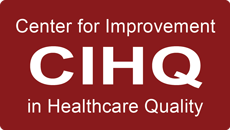Each year, the hospital governing body must decide the number of performance improvement (PI) projects to be conducted, along with the scope of each project. If this comes as a surprise, you’re not alone. CMS standard 482.21(d)(1) is commonly overlooked by hospitals. Additionally, many hospitals struggle with understanding CMS’ expectations for performance improvement projects and conflate projects with activities within the organization’s Quality Assurance and Performance Improvement (QAPI) program. Understanding the important differences between projects and activities allows the organization the ability to focus QAPI efforts toward meaningful improvements in the delivery of patient care and effectively meet CMS standard 482.21(d)(1).
Differentiating Projects from Activities
Activities are considered the continuous, ongoing functions of the QAPI program, i.e., the tracking of medical errors and adverse events, analysis of data, implementation of preventive and corrective actions with staff training and education, and continuous monitoring of quality and safety in all departments and service areas. These day-to-day activities are the backbone of the QAPI program triggering the need for process and policy changes which may lead to larger performance improvement projects. Commonly, performance improvement activities involve rapid-cycle improvement strategies, e.g., the Plan-Do-Study-Act (PDSA) cycle. The PDSA cycle is a four-stage rapid-cycle quality improvement strategy. The stages include:
- Plan: Identify an opportunity to improve, set an aim, and develop a plan to test change.
- Do: Carry out the plan on a small number of patients.
- Study: Examine the results. Did you achieve your goals?
- Act: Use your results to make decisions to incorporate changes into your workflow and establish future performance improvement plans.
Selecting Annual PI Projects
The governing board is responsible for providing resources and prioritizing the total number and type of performance projects for the organization each year. While CMS does not prescribe the number or type of annual performance improvement projects to be conducted, there are some key requirements. First, the specific number of annual performance projects must be reflective of the complexity and scope of services provided by the organization. For example, consider the size of the facility and the intensity of its services provided, e.g., critical care services/units, complex surgeries, transplant services, maternal/child health services, and oncology services, including radiation and chemotherapy, etc. A smaller hospital with a smaller number of services would be expected to have fewer projects compared to a large hospital with many more complex services.
Next, rationale is needed to explain and support the board's selection for each project. The decision should be grounded from an analysis of hospital-collected data, publicly available data, and/or recommendations from nationally recognized organizations. From this foundation, the governing board forms a decision to pursue the project with a belief that improvements in patient health outcomes and safety can be achieved. Evaluation of progress must be measured using clearly defined performance indicators.
Survey Readiness
When keeping your organization survey-ready, the governing body should be prepared to explain how annual PI projects are selected, including how the number is determined, and how the scope of specific projects aligns with the organization’s complexity and scope of services provided.
Expect surveyors to ask for a list of projects conducted for the last three years; however, CMS recommends organizations keep records of completed PI projects for six years. Yes, six years! For completed projects, the hospital should be ready to demonstrate how the project resulted in measurable progress toward improving the quality of care and/or patient safety.
Be prepared to provide surveyors with a list of PI projects currently in progress, including with the explanation of why the project was chosen and how it is believed that the specific project will improve patient health outcomes. This can be accomplished through a brief description. Be prepared to provide documentation, discuss what activities the project entails, and how the impact of the project is being monitored with comparison to baseline data to evaluate measurable outcomes.
For projects that are currently in progress, be ready to present baseline data. In the case of new projects, be able to provide defined performance indicators with a data collection plan.
Summary
Remember, there are clear differences in performance improvement activities and performance improvement projects. The number and scope of the hospital’s annual performance improvement projects need to adequately represent the complexity and scope of services the organization.
References:
1. Centers for Medicare & Medicaid Services. (March 9, 2023). Revision to State Operations Manual (SOM) Appendix A – Interpretive Guidelines for 42 CFR 482.21, Quality Assessment & Performance Improvement). Retrieved from: cms.gov
2. Institute for Healthcare Improvement. Science of Improvement: Testing Changes. Retrieved from ihi.org
2. Institute for Healthcare Improvement. Science of Improvement: Testing Changes. Retrieved from ihi.org
